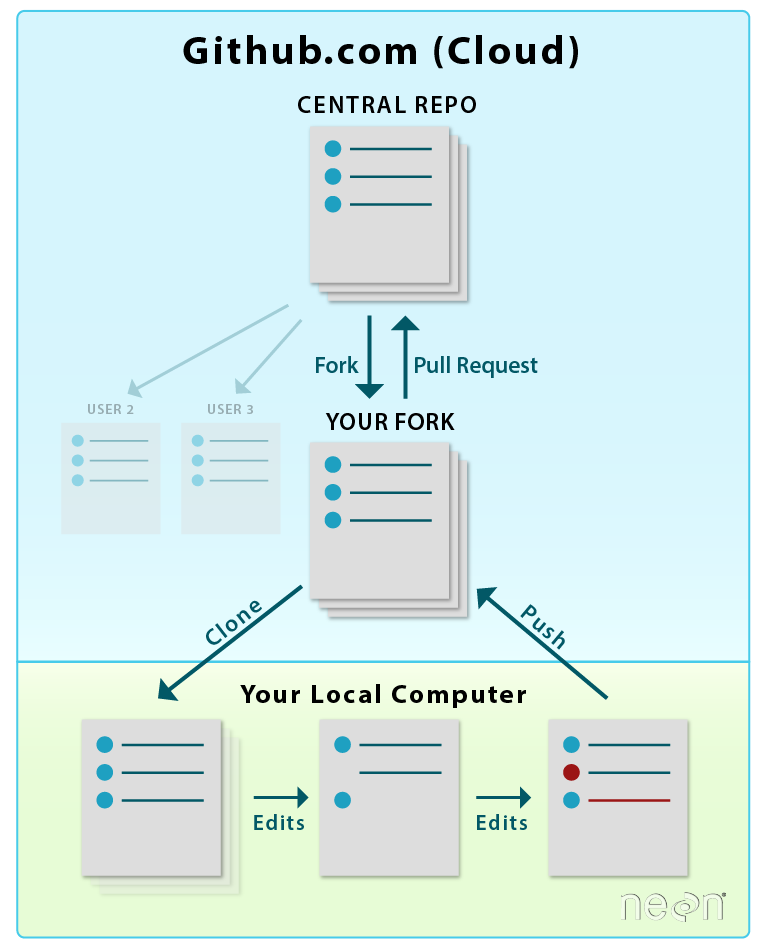Forking in Git and GitHub
What is a Fork?
A fork is a new repository that shares code with the original “upstream” repository
Add to or modify repository hosted on someone else’s account
“Sees” changes from parent repo - allows syncing with parent
Can be for personal purposes - doesn’t have to be pushed to original repo!

Why fork?
Allows users to contribute to projects they are not directly a part of
Allows faster development and bug fixes
Outside contributors are what make a project truly “open source”
Several forking scenarios
Propose changes or fix bugs on a package or software
Add a feature to open source software
Use someone else’s repository as a basis for your own
The process of forking
- Create a fork from the parent repository
- If not making changes in GitHub, clone your forked repository to your local machine
- Make and commit your changes, making commits along the way if necessary
- If necessary, sync any changes made to the parent repository with your fork
The process of forking
- (Optional) Create a pull request to contribute your changes back to the parent repository
- Make any changes suggested/requested by the parent repository owner
- The repository owner will decide whether or not to merge your pull request
Things to keep in mind when forking
People (generally) want your engagement, suggestions, ideas, and contributions
- Especially true for NMFS
Look for a contributing guide (commonly a
CONTRIBUTING.mdfile) or wiki instructions for contributingBe descriptive with your pull requests
Pull requests can be iterative conversations with the repo owner
Forking as a Worldview
Forks and forking are concepts that can be applied outside of the Git/GitHub realm
Slides
Documentation
Code/packages
Tutorials
Ideas
Movements
Many other examples

U.S. Department of Commerce | National Oceanic and Atmospheric Administration | National Marine Fisheries Service